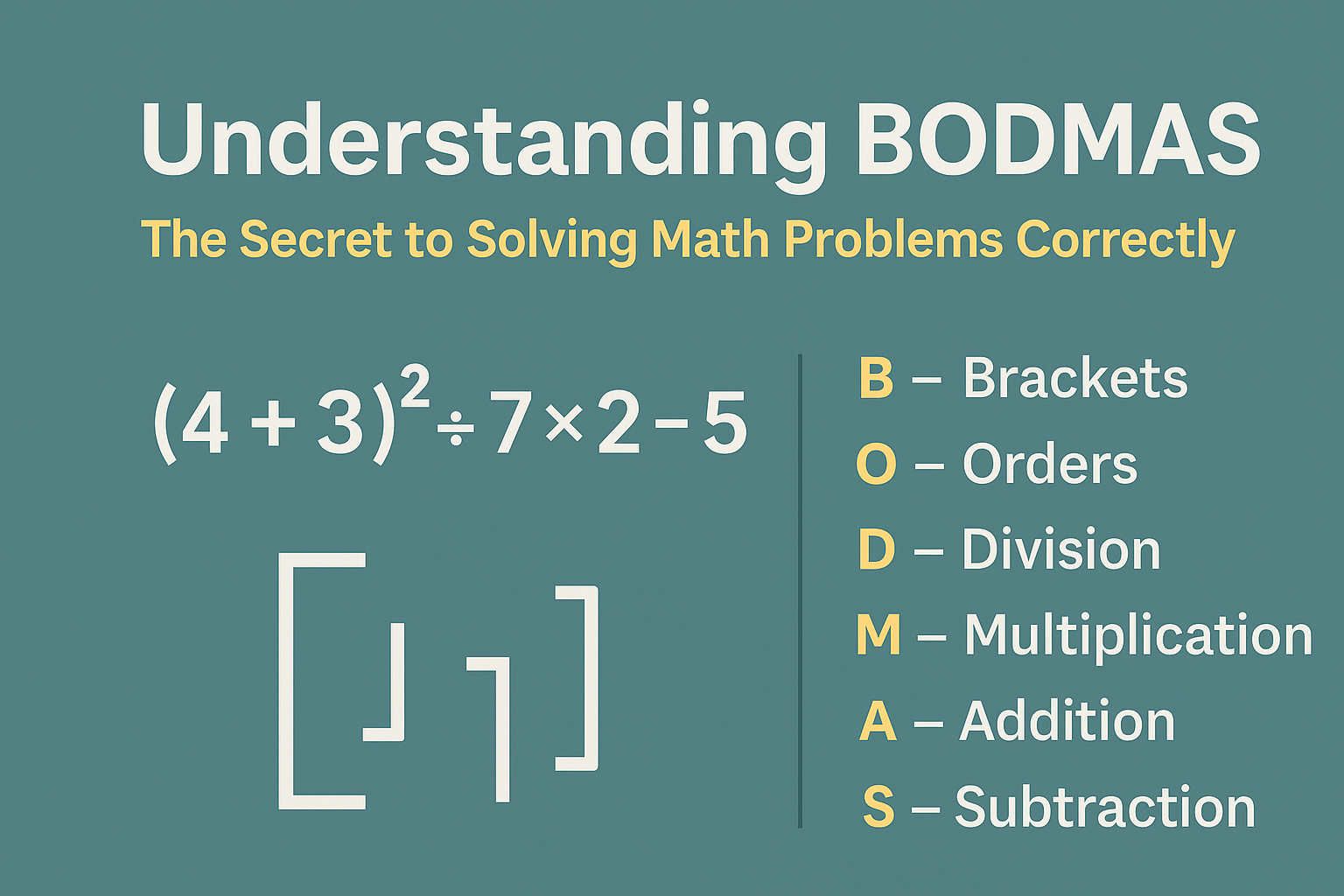Introduction
Mathematics is described as one of the simplest subjects because when you know the formular to solve the problem, you are done with it.
Have you ever solved a math problem and gotten a different answer from your friend—even though you used the same numbers? Yes, that’s what happened sometimes. The chances are, one of you ignored the BODMAS rule. This simple but powerful rule tells you the exact order to follow when solving math expressions. Though Computer Science students called it BEDMAS. Whether BODMAS or BEDMAS, all are the same. Because computer Science students called Order as Exponential. Now, let’s break the it down!
What Is BODMAS?
BODMAS is an acronym that stands for:
B – Brackets
O – Orders (powers or exponential and square roots, etc.)
D – Division
M – Multiplication
A – Addition
S – Subtraction
This means, if you find yourself with a mathematical question, what you will do at first instance if to check whether there’s Bracket, Order, Division, Multiplication, Addition and Subtraction. If yes, you have to start removing the Bracket, then Order follow by Division, Multiplication, Addition then Subtraction. BODMAS tells you which operation to do first when solving a mathematical expression.
Why Is BODMAS Important?
Math problems can have multiple operations. Without a clear order, everyone might get a different answer. BODMAS ensures consistency and helps avoid confusion.
Also Read: How Traditional Festivals Are Keeping Our Heritage Alive Today
Consider this simple example Without BODMAS:
Let’s look at this expression below:
6 + 2 × 3
If you solve from left to right:
6 + 2 = 8, then
8 × 3 = 24
But that’s wrong according to BODMAS!
Now, check this example below using BODMAS:
According to BODMAS:
Do multiplication before addition
2 × 3 = 6
Then 6 + 6 = 12
The correct answer is: 12
When you look the two answers, you will discover that they are not the same. But the correct way of solving this type of question is the second approach that produced 12 as the answer.
Breaking Down the BODMAS Rule:
1. Brackets First
Brackets first means when you are solving a mathematical expression and there’s bracket then anything inside brackets must be solved first.
For example:
(4 + 2) × 3 = 6 × 3 = 18
2. Orders (Exponents, Roots, etc.)
Next, if there’s any exponential or order, handle any powers or roots before proceeding to know whether there’s Division.
For example:
2² + 3 = 4 + 3 = 7
You see, we have to solved the exponential first before adding the values together to give us 7.
3. Division & Multiplication (Left to Right)
Division and Multiplication are walking hand in hand. Now, do these as they appear below, from left to right.
For example:
20 ÷ 5 × 2 = 4 × 2 = 8
From our BODMAS rule, division come first before multiplication. Then let’s solve the division first that’s 20 ÷ 5 = 4, then 4 × 2 = 8. If you follow another method to solve it without following the BODMAS rule, you will definitely have a different value and that would make it a wrong answer. Obeying BODMAS rule is very important to beginners.
4. Addition & Subtraction (Left to Right)
Same rule applies here too: that’s go from left to right.
For example:
10 – 3 + 2 = 7 + 2 = 9
The method using the BODMAS rule
Now, let’s add more examples for you to Practice:
Question 1.
10 + 2 × (6 – 4)
Step 1: Brackets → 6 – 4 = 2
Step 2: Multiplication → 2 × 2 = 4
Step 3: Addition → 10 + 4 = 14
You Can Also Read: Websites That Pays You Daily Even With Your Phone
Question 2.
18 ÷ 3 × 2 + 4²
Step 1: Orders → 4² = 16
Step 2: Division → 18 ÷ 3 = 6
Step 3: Multiplication → 6 × 2 = 12
Step 4: Addition → 12 + 16 = 28
Note: Always look for brackets and orders first. Then go left to right with multiplication/division, followed by addition/subtraction. Write each step clearly—it helps!
Finally
The BODMAS rule is a fundamental tool every math learner should master. Beginners should not take these rules for granted as it will bring confusion to them when solving mathematics. Whether you’re solving simple equations or tackling algebra, following the correct order of operations will save you from common mistakes and wrong answers.
So next time you’re working on a math problem, think BODMAS—and you will get it right!

